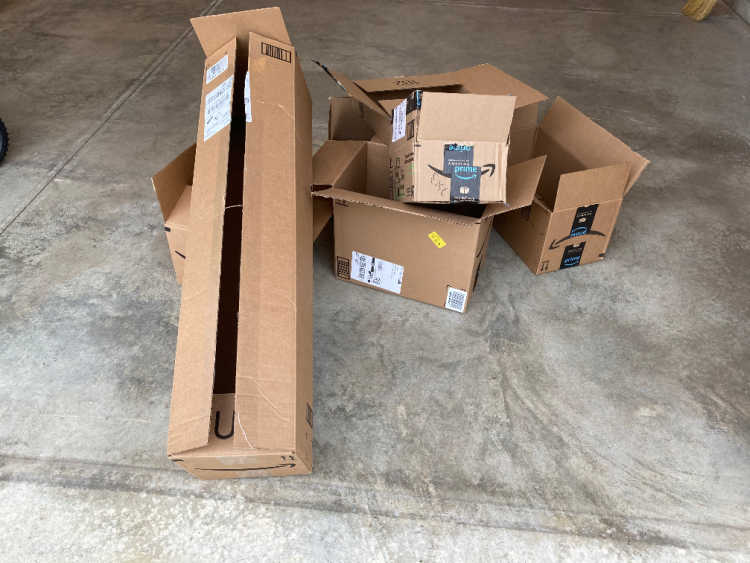
This is a great project for your children. Get them involved so they can see first hand how recycling works.
Online buying is now bigger than ever and I really don’t see that changing anytime soon. The postmaster told me that package delivery within the post office is up six times over this time last year. Not to mention Fed EX, UPS, and Amazon’s own trucks.
Some people hate the thought of people buying so much online but you have to be realistic and accept the fact that it is here to stay. And when you think you about it, Amazon is just the modern day Sears and Roebuck. Not that long ago whatever you needed you simply ordered from the Sears catalog and picked it up at the store.

Cardboard works amazingly well for weed control in a garden. All you have to do is break the boxes down so they are flat, lay them out in the garden in and around the plants that are there, then place a layer of mulch over top of them.
The cardboard will eventually break down and actually enrich the soil. A layer of cardboard over the soil actually provides the perfect habitat for earth worms and we all know that earth worms are the greatest soil aerators in the world, not to mention all the worm castings they leave behind.
You can put the cardboard close the plant stems or cut a slot in the cardboard and actually allow it to surround the plant stems. The cardboard blocks out sunlight and keeps weeds from growing.
Of course all of these boxes have tape and labels on them and you have two choices. One, remove all of the tape and labels before you using the cardboard boxes, or do what I’ll do, just leave the tape and labels there, then when I work in the garden at a later date anything that did not decompose will be super easy to pick up and properly dispose of.
I’m suggesting that you get your kids involved in this project because they can make up their own little flyer, explaining how to use cardboard in the garden and then offer to either collect shipping boxes from people that are not going to use them and then pass them onto people who need more boxes.
The kids will get really excited about this project, they will learn a great deal about gardening and how the earth works. And . . . they will become the go to experts in your neighborhood for gardening advice.
And now, let’s get all entrepreneurial about this.
While the kids are passing out their cardboard flyers, they might as well add in a second flyer that describes the plant offerings that they have available.
That’s right! Turn those kiddos into growers and plant suppliers.
This is something that I’ve been teaching folks online for 21 or 22 years now and it never gets old, and to me it’s still amazing.
Teach your kids how to turn small sticks into $7.00! That’s right, each 4″ stick could be worth $7.00.
What kind of sticks should they grow and sell?
For the sake of simplicity let’s start out with hydrangeas. Why? Because they are super easy to propagate as hardwood cuttings and they have beautiful blooms. You put a picture of those flowers on a flyer and you won’t believe how fast they’ll sell.
Last summer I had people begging me for hydrangea plants and they bought them so fast that I was not only sold out all summer long, I have almost none to offer this spring. Urrrrrg!
That’s a good problem to have but it can also get really frustrating. To solve my problem I put in two new hydrangea beds so I’d have a place to get lots and lots of hydrangea cuttings.
Macrophylla hyrdrangeas are really pretty, but they are a bit more tricky to grow and sell depending on where you live. Macrophyllas are the ones with the colorful pink, blue, purple, red and deep pink blooms.
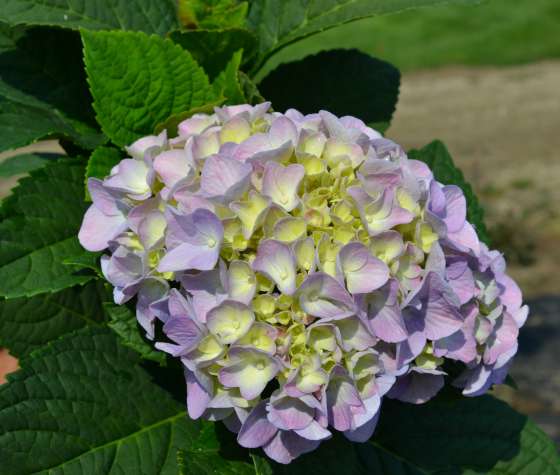
Keep in mind, some plants are patented and that means that it’s against the law for you and I to propagate them. This is not really a problem, you just have to make sure that you have the tag for the plant that you are taking cuttings from and make sure that it is not patented. A patented plant will have the plant patent info on the tag.
But since Macrophyllas can be tricky, let’s keep things simple and concentrate on Paniculata hyrdrangeas or Aborescens hydrangeas. They are beautiful and they sell really well. They don’t have those striking colors but they are very predictable bloomers.
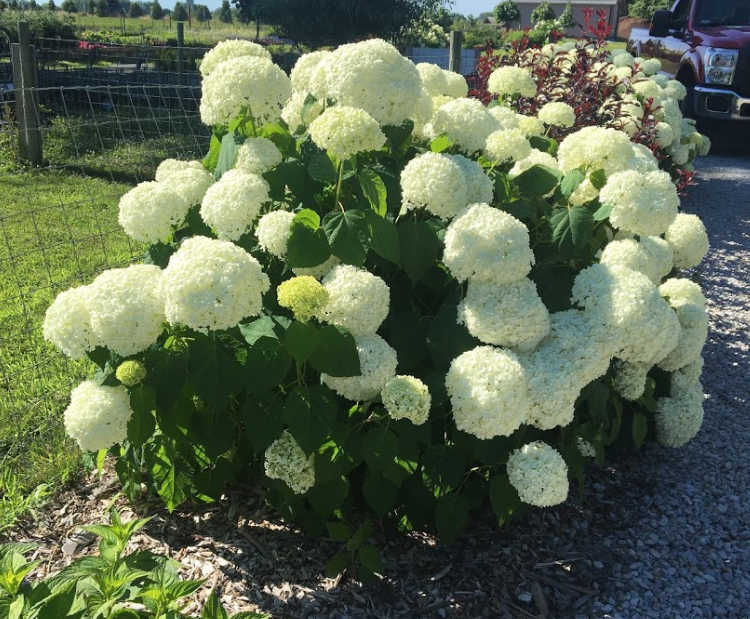
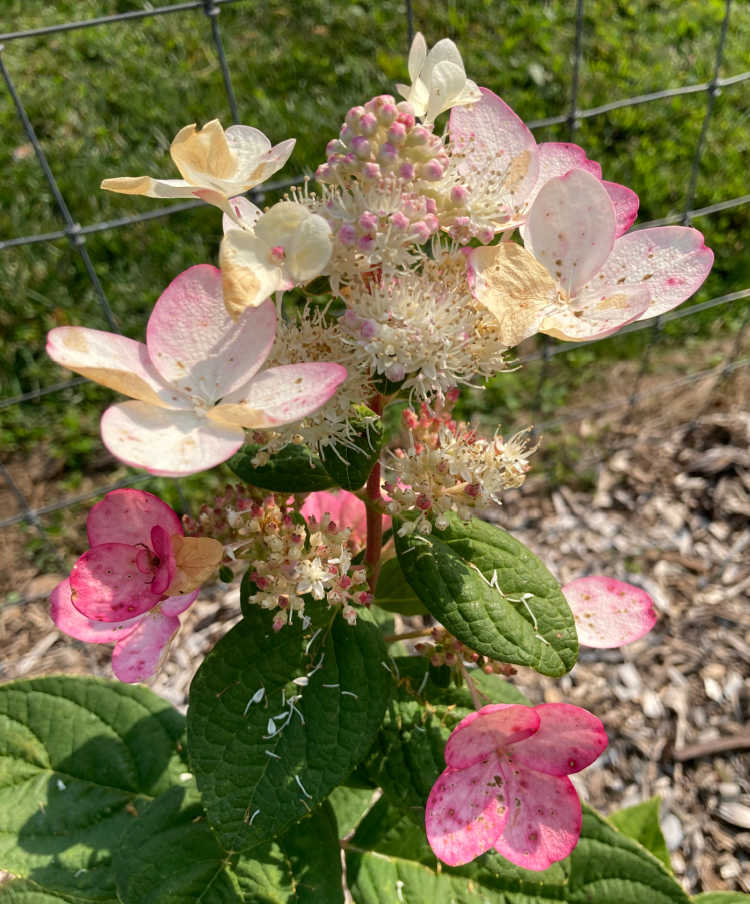
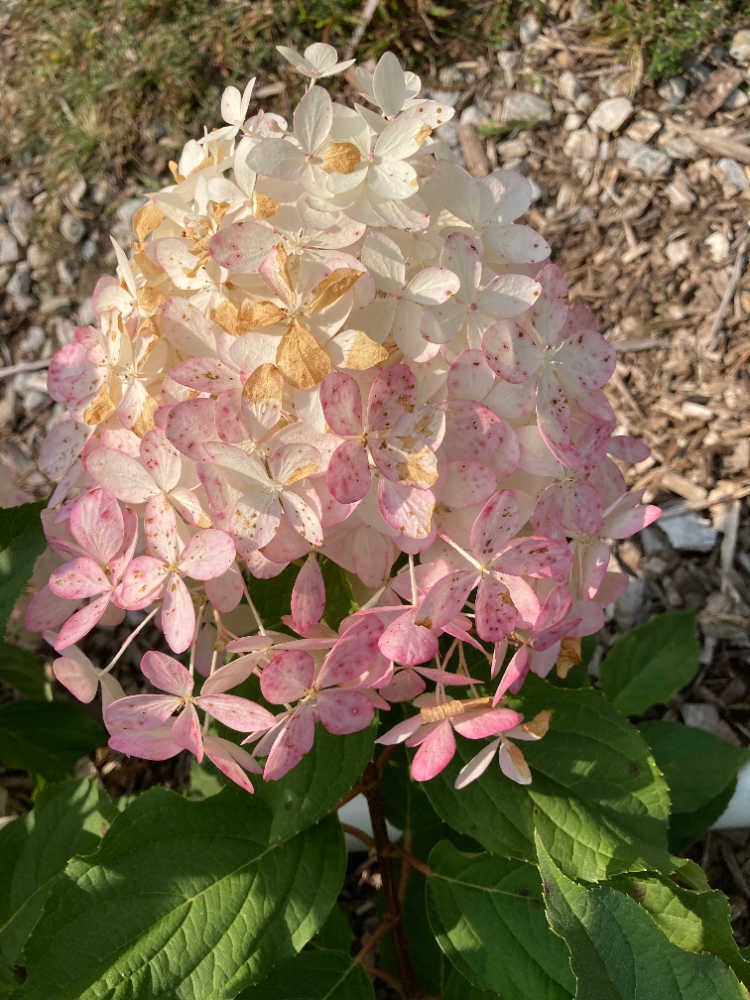
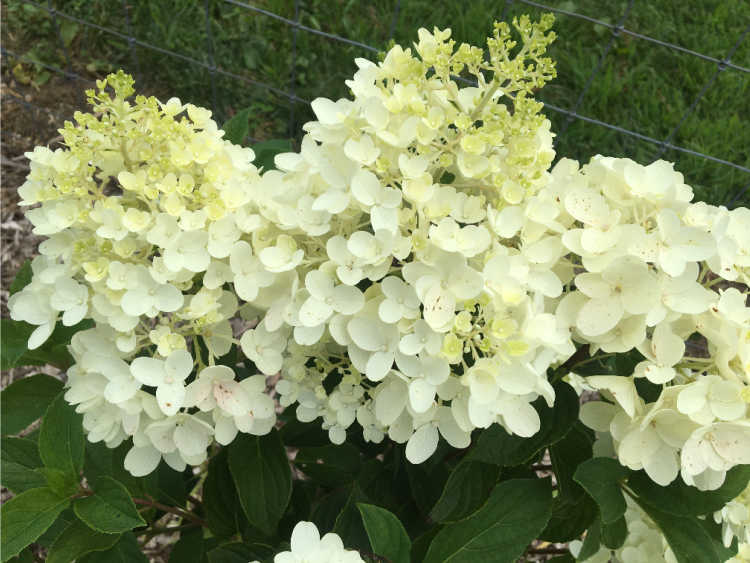
All of these hydrangea are easy to propagate and they grow very quickly. They can be rooted in the winter as hardwood cuttings, or in the summer as softwood cuttings.
Can you imagine how introducing your kids or grand-kids to the world of plant propagation and plant selling could impact their lives for the rest of their lives? Trust me, it could be the most profound thing that ever happens to them!
Questions, comments, mean things to say? Post them below and I will happily respond.
Until then, by any and all means stay inspired!
If you leave the pile of cardboard boxes out to get rained on, they get very soft and you can just tear them apart by hand to make the shapes you need. Some have big sharp staples, it’s better to remove them with a pair of pliers before setting them down.
I have been considering cardboard for smothering our lawn where I want to make new beds. Unfortunately, our lawn is mostly Bermuda grass, I’m not sure the cardboard will be enough. I thought soil alone would be enough in my raised planters, but that stinking Bermuda made it’s way to the top. What do you think? Thanks!
Lisa,
I really don’t know. Fresh cardboard, maybe two layers with 4″ of mulch on top. Me? I’d spray it first.
That’s what I do Mike. You will never stop the grass even with double or triple layer cardboard. I’ve tried digging it out but I never got all the roots. So it’s a fight year round. But I did start my first garden in cardboard boxes. I started with two mattresses boxes. filled it with dirt and planted. Had a great little garden that year. The guys at the furniture store save boxes for me every time they get a new truck because they know I use them. I call myself a lazy gardener but they told me I’m recycling so whatever works. Happy Gardening Y’all!
Bermuda grass is the pits. I’ve seen it come up through 3-4 feet of compost. One natural way of eliminating it I discovered accidentally is to smother it with a high-density wildflower bed. One thing Bermuda can’t take and that’s shade. The wildflower will shade it out and kill it. This works in a full sun location, and wildflowers don’t require amending the soil in any way before planting. Downside is you need to wait a full growing season to eliminate it, so it’s a long term project. In the meantime enjoy the pollinators and goldfinches visiting your wildflower bed.
Hi Mike, I have been enjoying your wisdom for years and the little donkeys, are adorable. I have a HUGE Giant Fleece flower, that I would like to take cuttings from or take roots, but can not find any advice anywhere. I am in zone 2b.Thanks for any help.
Ruth S.
Ruth,
I’m just guessing but I’d say treat it like a softwood cutting, just stick the cuttings in a pot and cover with plastic to keep moisture in. https://mikesbackyardnursery.com/2015/01/easy-summertime-plant-propagation-techniques-can-home/
Hello. : ) This is a cardboard question. I want to install new foundation beds this year. The previous beds were extremely narrow so I will be expanding into established lawn. I plan to follow your wonderful guidelines to add 10 inches of topsoil and also newspaper beneath the mulch layer. – I had thought to spray weed killer over the existing lawn that will become bed. Then I was thinking to put down cardboard under the 10 inches of top soil. Is this a good idea or bad idea? Thank you so much for your help! I greatly appreciate it! : )
– Jennifer from Delaware
Jennifer,
You can do that, but with 10″ of topsoil that grass is not going to grow through. That cardboard will better serve you over the top soil and under the mulch. That will suppress the weeds in the topsoil. All topsoil contains a lot of weed seed. Not an issue as long as you make sure it doesn’t get sunlight.
Thanks so much for your wisdom! I greatly appreciate it! : )
My hubby has a fanatical hatred of dandelions & wild onions which continue to plague him, year after year. He roto-tilled the entire yard, with the intention of getting rid of said enemies, only to discover that they refused to die. He covered the yard with a tarp, no luck. He wants to plant Zoysia grass in the spring, but has been using white vinegar for years to kill the plants that have plagued him. I tried to tell him that he may have made the ground to acidic to support anything but dandelions & onions. I know he needs to check the Ph, and it’s not a small area, but then what? We have dogs, and don’t want to use poisons to kill weeds, not to mention a well. How does he rebalance the Ph?
Barb,
Rototilling is seldom the answer. The answer is a nice thick lawn, a lot of people rave over Zoysia grass. Others not so much, but those who like it really like it. Type Zoysia in the search box on this page and read the comments.
He has bought the Zoysia, but was trying to prepare the yard for planting. He thought he had to kill everything first, ideally, without chemicals. What I am afraid of is that he has made the soil to acidic, and it might affect the Zoysia with all the vinegar he uses. Shouldn’t he check the soil ph. first?
Thank you.
Barbara, probably not. That vinegar will dissipate pretty quickly with some rain.
I have old purple sandcherries, do I dare to trim them ,or just let them go on their own ?
Donald,
Purple sandcherry usually respond well to pruning but I wouldn’t use those cuttings. Old plants can be riddled with pests like Peach Tree Borer.
How do we find out what plants members have for sale. I am looking for some blue hydrangeas. I want to buy the small plant that has already rooted.
Thank you—-Debbie
Debbie,
You have to be a member to buy from members. http://backyardgrowers.com/join, once inside the members area just go to the buy sell section. Or ask and you’ll get lots of replies. Most hydrangeas sell for around $2.00 each.
Last March we moved to a 2 acre property. (Zone 5a-4b). I installed a no dig veggie garden and used cardboard right over the grass for the entire garden.
Then I installed well composted cow manure on top of the cardboard, straw on top of that and then top soil. Once the garden was planted (after May 24th in our zone) I mulched the plants.
It was fantastic! I couldn’t believe how well it grew, with no tilling. Once the garden was harvested we added a layer of compost on top and then wood mulch to prep the bed for the next season (2021).
I highly recommend no-dig gardening. So much easier than tilling, no disturbance of the soil biome, and no disturbing of weed seeds either.
If interested, check out Charles Dowding and others on You tube.
Brenda, that’s awesome! Thanks for sharing.
I have used cardboard to supress weeds, but also to conserve water in my garden. I have raised garden boxes that will dry out quickly in the hot summer months of July and August. The cardboard has helped to keep our water costs down and my vegetable garden happy. Less wilting during the day and when there is wilt on an especially hot day, they recover quickly as the evening starts to cool. So far we have not gotten the snow needed to provide enough water for our summer growing season. I will be saving boxes and newspaper to use as mulch to conserve water and keep those pesty weeds down.
If you can cut the sticks from a hydrangea &use as hardwood cuttings aren’t the stems already dead for the winter?
I’m thinking when my hydrangea dies down in the Fall & by Winter they look completely dead & I didn’t think they bloom out in the Spring…..i think in the Spring it has new stems. I have no ideal what kind of Hydrangea that i have.
Thank you Mike, u have helped me many times over.
Clifton,
To a degree you are partially correct. Some hydrangea stems suffer winter die back, but usually not completely. When I do my Annabelle cuttings it’s pretty easy to see that the top of the stem, closest to where the bloom was are no longer viable, but just a few inches down the wood is still green and roots well.
How can I obtain a pink hydrangea? I live in the southern tier of NYS. About 200 miles from NYC, near the Pa. border.
Gail,
Either locally or online. They are often available in our members area for just a few dollars. http://backyardgrowers.com/join
Gail, Even if you manage to get a pink hydrangea it is going to go blue of your soil is acidic. If I am getting your inquiry right, you may have blue hydrangeas and you want a pink one. Well you have to change the pH of your soil. Get it to be more alkaline by applying lime, for example.
There’s a big ‘BUT’, though. If your soil is naturally acidic this will be a never ending battle, You will have to keep after it regularly.
Just a thought. Hope it was helpful.
JoeT
Joe,
I’m not sure that I agree with this. I have blue hydrangeas that have pink blooms unless I treat the soil with Aluminum Sulfate. But my Forever Pink are always Dark Pink and no effort to adjust the soil.
Mike, I am sure you are right about the Forever Pink. But as you said, you have to us the aluminum sulfate to get the pink blooms back to blue. I would guess you have an alkaline base soil, thus you have no problem with Forever Pink because it is happy in your soil.
Joe,
That’s really not the case. Forever Pink is just pink. My soil is not that alkaline. It’s different than other hydrangeas.
Hi Mike. You are right. I looked up the “Forever Pink” and it is a true pink hydrangea. The various places also said that it would be ‘brighter pink’ (their words) if you gave it some lime.
I also still think that because you give your blue hydrangeas a touch of aluminum sulfate when they are getting pink edges, you probably have alkaline (or at least a tad more than neutral) soil.
That is it. I will not write any more on this issue. Please understand I am not being stubborn about this. I have enjoyed your site for a long time. Just trying to be helpful.
Joe t
Joe,
You’re fine, it’s good for everybody to follow along and learn how some of these plants work.
Rats Mike! Don’t tell the masses please. I have been using cardboard for years and I have been worrying about having to fight fellow gardeners for it,, or worse, having to start paying for it. It is a precious resource indeed.
Leneke,
There’s plenty available. Body shops and appliance stores have a ton of it.
Wouldn’t a layer of cardboard with mulch on top prevent water from getting to the plant roots?
Don,
No, just the opposite really. First of all, the cardboard actually traps any moisture that is already there. Secondly, when water hits the plants it will leach down around the stem of the plant and they will be plenty hydrated.
Mike, I have been using cardboard to keep weeds out for a few years now. I started out using lightweight cardboard, but that broke down too quickly. I switched to corrugated cardboard and that really works great. One thing I want to mention, though, is to not use plastic-coated or glossy paint-coated cardboard. Those do not break down well and leave many colored scraps all over your gardens. The boxes with matte finished print on them work just fine. Then be sure to mulch over the top of the cardboard.
Do any of these Hydrangeas attract Flutterbys? or other pollinating insects?
Jim,
I’m sure some do, but not as well as other things like Bee Balm or Butterfly Bush.
They bring in tons of bees. I have a Pink Diamond Hydrangea next to my bathroom window and I observe the bees and other insects on it all summer. When they first bloom out I’ve observed bees collecting pollen and falling asleep in them. They also love the Annabelle Hydrangeas.